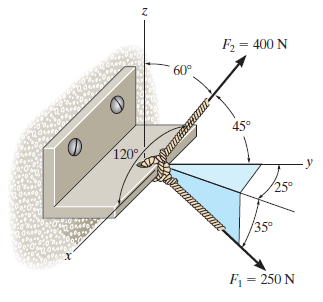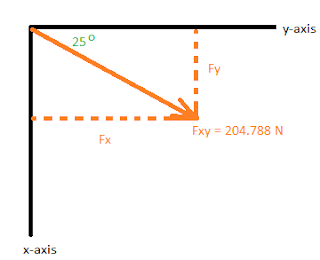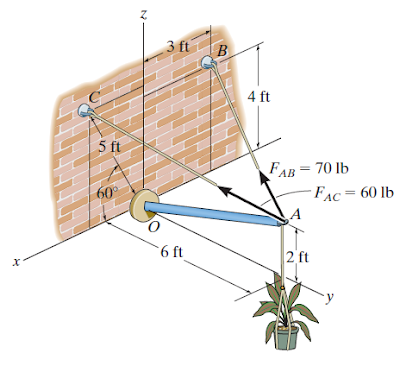With the exerted force of the man = 70lb, both  and
and  . It would be easier to determine the forces' Cartesian vectors if you can determine the coordinates of the points included.
. It would be easier to determine the forces' Cartesian vectors if you can determine the coordinates of the points included.
| POINT | i, ft | j, ft | k, ft |
|---|---|---|---|
| A | 5.00 | 7.00 | 5.00 |
| B | -1.00 | 5.00 | 8.00 |
| C | 5.00 | 7.00 | 4.00 |
FOR FORCE FA
Determine the Cartesian vector of Force FA by taking the difference of points A and B's coordinates. Take the convention sign of the axes to identify if you are to use + or - in the equation.
At x-axis, for i: 5 - (-1) = 6ft (the force direction going to +x) thus +6i
At y-axis, for j:-7-(-5) = -2ft (the force directing to -y) thus -2j
At z-axis, for k: 8- 5 = 3 ft (the force going downwards) thus -3k
Giving us the vector
So, the Cartesian vector of FA:
FOR FORCE FC
Similar with FA,
For which the scalar of FC becomes:
Then, the Cartesian vector of FC is
RESULTANT
MAGNITUDE:
| FORCE | i | j | k |
|---|---|---|---|
| FA | 60.00 | -20.00 | -30.00 |
| FC | 30.00 | 60.00 | -20.00 |
| summation | 90.00 | 40.00 | -50.00 |
INCLINATION:
Back to COMPONENTS OF SPATIAL FORCES




